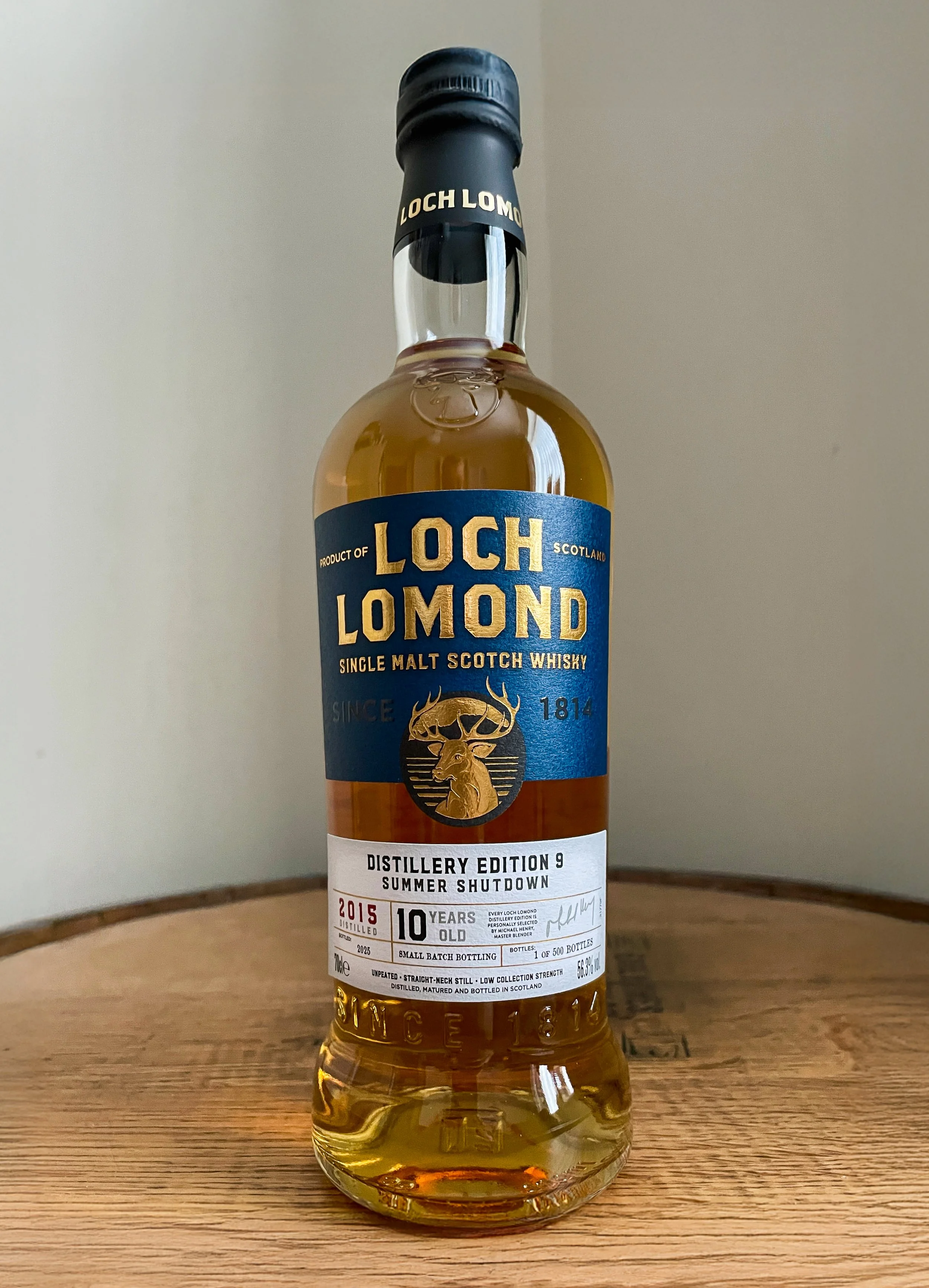Holyrood Pitch
Lowland Single Malt Scotch | 49.4% ABV
Score: 7/10
Very Good Indeed.
TL;DR
Fascinating & different. So different
A pitch for Pitch
I am very far from being a lawyer, so working my way into the correct mindset to read legal documents has always been a chore.
But, because of my interest in the history of Scotch, I've found the various bits of whisky legislation to be less of a challenge. Nevertheless it took me quite a long time after I first read The Scotch Whisky Regulations 2009 to get to grips with what I now think is the most important line in the whole document:
"5.—(2) A person must not manufacture any whisky in Scotland except Scotch Whisky."
The first, second, and probably third time I read that I either nodded along, or else thought, "well duh, stating the bleedin' obvious, innit?"
But eventually a small light switched on, and I realised that this is the cunning lawyerly phrasing which hems in and constrains Scottish distillers. It's saying, "we're defining how to make Scotch in this document, and don't you dare go trying anything new or different".
I expect the SWA would say that it's important to closely define Scotch so as to reassure consumers that they're getting what they think they've paid for. The cynical amongst us might suggest that it would be more accurate to say that it's important to closely define Scotch so as to protect the interests of the large, established distillers. In any case, what it means in practice is that it's difficult to be truly innovative if you are a distiller of Scotch whisky.
Thus, the endless churn of "new", microscopically different cask finishes, which can really be summed up, in my not so humble opinion, as minor variations on a few old established themes, all of which were first laid out by Glenmorangie in the 1990s and early 2000s. (Balvenie, I hear ya, but no). Has there ever been a better red wine finish than the Glenmorangie Tain l'Hermitage?
We've also seen plenty of distillers using non-standard strains of barley or yeast, playing around with peating levels, or extending fermentation times. To my mind and palate the results have been mixed. I've yet to find a Bere barley dram I loved, whereas I think that Golden Promise lives up to its name. Octomore's stated parts per million never seems to bear the slightest relationship to what the whisky tastes like, whereas Meikle Tòir Turbo is a truly pleasurable, intensely phenolic journey.
Holyrood distillery has been producing spirits (rum, gin, and spirit drinks as well as malt) for six years or so by now and, by all accounts, the team have been experimenting from day one, with many of these experiments yet, or never, to be released. I have, for example, tasted a sample of a spirit made using wheat beer yeast which I would have loved to see bottled and released, but I was told there wasn't enough to make it commercially worthwhile. Then there’s the fascinating 'bub' project, which attempts to recreate a historical nineteenth century kind of whisky and their involvement in James Eadie's Project 1927.
Single casks aside, there have been four generally available public releases, although none of these in large quantities, and there isn't, yet, what you could call a core release. After the debut Arrival, we've seen a series of three whiskies chosen to show off different factors which contribute to the flavour of the liquid. Embra is lightly peated, and uses seven different yeast strains. I like its gentle smoke. There is also a fizziness to it, a brightness on the tongue - a characteristic which doesn't often appear in Scotch (it was first pointed out to me in Bruichladdich Rocks, whenever that was, and it's mostly the Laddie where I find it). I did not understand Ambir, or at least, I couldn't taste anything that I could relate back to the speciality malts it uses, so I missed the point. Sweet, rich, malty but, to me, entirely standard.
Today's dram, Pitch, was released in March 2025, and it uses two red wine yeasts, Toro Nero and Pepe Nero, alongside distillers yeast, as well as replacing some of the standard distillers malt with brown malt. The name comes from brewing, from that step in the process when the yeast is 'pitched' into the worts. (Side note: if I ever make a whisky with speciality yeast, it'll be called 'Yeet', and the advertising strapline will be: "the 's' is silent").
Now, I've been writing tasting notes for twenty-three years. A very rough "lick the back of the envelope and stick it up in the air to see which way the wind blows" calculation suggests I've scribbled at least 500,000 words in that time period. But looking at notebooks from this week, and a year ago, and a decade ago, it's easy to pick out the same words again and again.
Familiar flavours. Familiar tasting notes.
"Malty", "sherry, dry and with a hint of struck match", "apples - red", "malt - but malt loaf, not beer", "dunnage", "funky - but in a good way". Variations on these appear every week, precisely because they appear in so many whiskies. You might think I ought to try and expand my vocabulary, but for me a huge part of the fascination of Scotch is how the same basic flavour notes can be endlessly combined in subtly different proportions to produce the myriad of whiskies we're privileged to enjoy.
Pitch is not like that.
Pitch is a surprise. A fascinating turn through some hitherto inaccessible angle into new flavour territory for Scotch. Like walking down an old street for the thousandth time only to find the entrance to some kind of boutique of magic where previously there had always been a blank wall. Pitch is, I believe, an actual-factual genuine innovation in Scotch whisky flavour.
Review
Holyrood Pitch, Lowland Single Malt Scotch, 49.4% ABV
£64 paid, twice
Pitch is made using 84% distillers malt and 16% brown malt. It is fermented with 72% MG+ distillers yeast, 14% toro nero red wine yeast, and 14% pepe nero red wine yeast and matured in oloroso hogsheads. It bears no age statement, is natural in colour and non chill filtered.
Inexplicably still widely available.
Score: 7/10
Very Good Indeed.
TL;DR
Fascinating & different. So different
Nose
What is going on here? There's a powerful initial wave of hazelnut, but mixed up with that there are a bunch of other things I really can't make out. Something phenolic, but decidedly nothing to do with peat. The distillery tasting note mentions green pepper. I can't see that at all, but perhaps I'm misinterpreting pyrazine, the green pepper aroma, as phenol? This is fun! Something to sniff that I don't understand. Some chocolate comes out to play, along with cooked fruit - plums maybe? I could nose this for days and still not be sure what's going on. Absolutely fascinating.
Palate
Chocolate, then a building and building nuttiness (hazelnut again). Lots of milk chocolate; better than easter egg quality, but definitely not the posh stuff. But what is that phenolic note? Is it even phenolic? I'm somehow reminded of the cold peat kiln at Springbank, even though there is nothing peaty going on here. No, it can't be phenolic.
Over time a slight sour note evolves. I often find this with oloroso casks, and I generally like it. It's the sourness of tamarind paste, or balsamic vinegar. The texture is wonderful. Properly mouthcoating and silky, and it carries the chocolate and hazelnut notes wonderfully well.
The Dregs
I keep on tasting this whisky, and I still haven't figured it out. It's compellingly different. Can Holyrood establish a niche for themselves as distillers of the unusual? Should they even try, or will that just lock them in to a small corner of the whisky geek market? I really don't know, but whatever they do, I sincerely hope they continue to present us with liquids like this.
Based on conversations with others who have tried it, Pitch is a love or hate whisky. I would still recommend you to try it. Even if you hate it, it will be part of your whisky journey (a novel! different! part), and you'll be able to force it on all your whisky friends as part of their whisky journey.
And should you love it, as I do, then 7/10 for £64 is money well spent, isn't it?
Score: 7/10
Tried this? Share your thoughts in the comments below. FM
This is a Friday First: a debut piece for Felix. We hope you’ll join us in welcoming him into the Dramface community in the comments below…
-
Dramface is free.
Its fierce independence and community-focused content is funded by that same community. We don’t do ads, sponsorships or paid-for content. If you like what we do you can support us by becoming a Dramface member for the price of a magazine.
However, if you’ve found a particular article valuable, you also have the option to make a direct donation to the writer, here: buy me a dram - you’d make their day. Thank you.
For more on Dramface and our funding read our about page here.






































